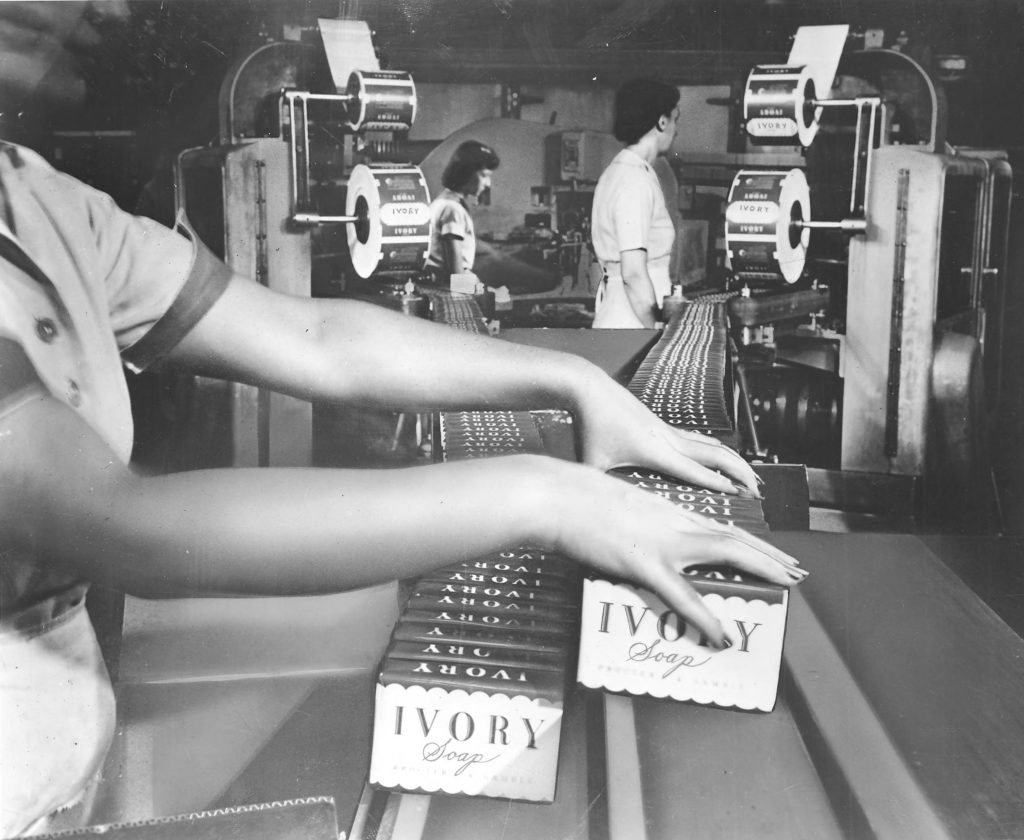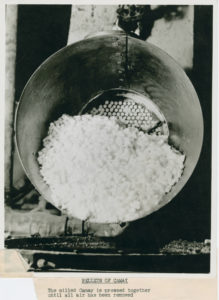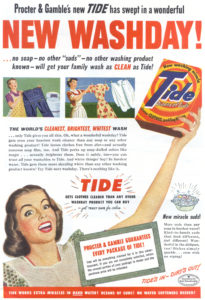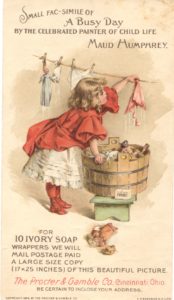Soap Opera: The Story of Procter & Gamble

Many national companies have Ohioroots, including the Goodyear Tire and Rubber Company and Quaker Oats. Did you know that Procter & Gamble, one of the world’s leading soap producers, started here in Ohio?

Procter & Gamble began as a partnership between James Gamble and William Procter, Irish and English immigrants respectively, after they became brothers-in-law soon after settling in Cincinnati, Ohio. The two young men decided to launch their careers in trades in which they had previous experience–candles (Procter) and soap (Gamble)–both of which already had an industrial presence in Cincinnati. The men decided to join forces to avoid becoming competitors in the market for animal fats, the main component for both candles and soap.
On October 31, 1837, witheach contributing $3,569.47, William Procter and James Gamble signed a partnership establishing Procter & Gamble Manufactory in Cincinnati, where Gamble supervised production and Procter managed the office and monitored sales. In 1840, they opened a plant on Central Avenue, just miles north of downtown in a location providing canal access, which enabled them to ship goods beyond city limits. At the start, there were eighteen other soap manufacturers in the city, but Procter & Gamble continued to grow, and by 1848 the company had an annual profit of $26,000. Later, the company moved its production close to the Miami and Erie Canal where they could produce 1,000 pounds of soap each day. The company’s sales continued to increase, and by its 30th anniversary in 1867, its capital assets totaled $800,000.
By 1859, Procter & Gamble reached $1 million in profits with lard oil as their top selling product, followed by candles and soap. The company was producing 319,235 boxes of candles each year by 1867. Introduced in 1879 as the first soap gentle enough to use on clothing, floors, dishes, and skin, Ivory Soap became the company’s first branded product and later its first international product in 1900. Other than some minor setbacks, and recovering from the Central Avenue plant’s destruction during a 1884 fire, the company’s profits continued to soar. Although Procter & Gamble stopped producing candles in 1920 with the dawn of ThomasEdison’s light bulb, the company continued to grow and develop some of America’s hallmark products still used today, such as Tide laundry detergent, Crest toothpaste, Dawn dish soap, and Crisco shortening.

Little did Procter and Gamble know that their involvement in the Civil War, albeit unintentionally, would be the beginnings of their pioneering contribution to American advertising. In 1861, after purchasing an entire boat’s shipment of rosin (the main ingredient in soap), the United States government named Procter & Gamble the official soap supplier of the Union Army in the west. The Union Army needed 1,000 cases of soap shipped to encampments each day, forcing Procter & Gamble to hire 300 additional workers, many of whom had to work the night shift in order to meet demands. It is interesting to note that whenConfederate troops were mere miles from Cincinnati, martial law forced the closure of all Cincinnati businesses, except Procter & Gamble. Procter & Gamble’s logo, a man in the moon with stars, was stamped on each crate shipped to the troops, which proved tobe a huge marketing tool for thecompany.

Post-war sales soared and the company continued to employ creative marketing schemes to sell its products. Harley Procter, one of Procter’s sons, took over the company’s marketing strategy and used advertising runs and promotions to further popularize the brand, making it a household staple. For Ivory soap, Procter & Gamblesolicited poems that praised the quality and effectiveness of Ivory soap for its advertisements. In addition, the company purchased paintingsfrom famous artists for full page magazine advertisements, the beginning of art in advertising, and agreed to send high-quality prints to consumers who submitted Ivory soap wrappers. Later marketing techniques included using celebrity endorsements, such as famous baseball players and coaches in the 1910s, as well as radio spots with sponsored cooking shows in the 1920s.
We invite you to browse Ohio Memory for photographs, advertisements, and newspaper articles about Procter & Gamble’s history and products. What Procter & Gamble products do you use in your home today?
Thanks to Kristen Newby, metadata coordinator at the Ohio History Connection, for this week’s post!



Leave a Reply
You must be logged in to post a comment.